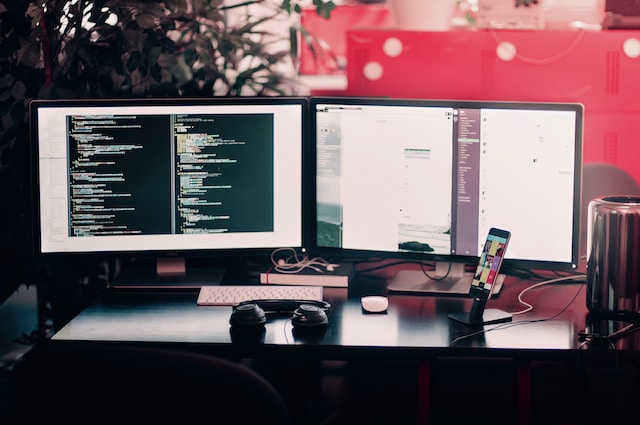


The choice of tools and equipment, including monitors, is crucial for productivity and overall well-being. While monitors play a significant role in a coder's workspace, it's essential to acknowledge that their usage is not without potential drawbacks. In this exploration of website development, we delve into the reasons why monitors can be considered counterproductive for coders, shedding light on issues ranging from eye strain to workspace ergonomics.
One of the primary concerns with prolonged monitor usage is the potential for eye strain and fatigue among coders. Staring at a screen for extended periods can lead to a condition known as Computer Vision Syndrome (CVS), characterized by symptoms such as headaches, blurred vision, and dry eyes. The high concentration of blue light emitted by monitors contributes to these issues, disrupting circadian rhythms and affecting sleep quality.
To mitigate this, coders may need to invest in specialized anti-glare screens, blue light filters, or take frequent breaks to reduce eye strain. However, these measures don't eliminate the fundamental problem and merely act as temporary solutions.
The nature of coding often involves long hours of sitting, contributing to a sedentary lifestyle. Monitors play a role in this by tethering coders to their desks for extended periods. Prolonged sitting is associated with various health concerns, including obesity, cardiovascular issues, and musculoskeletal problems.
To address this, coders might need to incorporate regular breaks, stretching exercises, and invest in ergonomic furniture like sit-stand desks. Nevertheless, the fundamental issue of extended screen time leading to sedentary behavior persists.
Monitors, while indispensable for coding tasks, can also become a source of distractions. With the prevalence of multiple screens, coders may succumb to the temptation of multitasking, dividing their attention among different applications or projects. This can lead to a decrease in overall focus and productivity.
To combat this, coders may need to practice discipline in maintaining a single-task focus or utilize software that limits distractions. However, the very setup of multiple monitors inherently encourages a broader field of vision, making it challenging to resist the allure of multitasking.
While high-quality monitors are essential for efficient coding, they come at a considerable cost. Not all coders have access to top-tier equipment, leading to disparities in the quality of workspaces. This lack of accessibility can hinder the performance and opportunities for those with limited resources.
Efforts to address this issue might involve advocating for workplace equity, providing subsidies for equipment, or exploring alternative coding environments. Nevertheless, until these solutions are widely adopted, the cost of monitors remains a barrier to entry for many aspiring coders.
The production and disposal of electronic devices, including monitors, contribute to the growing issue of electronic waste (e-waste). As monitors have a limited lifespan, they end up in landfills, posing environmental challenges. The manufacturing processes of monitors also contribute to carbon emissions and resource depletion.
To address the environmental impact, coders and tech companies may need to adopt sustainable practices, such as recycling programs and the use of eco-friendly materials. However, the industry's commitment to such measures is still evolving, and widespread change is yet to be realized. Interestingly, many programmers have a vertical monitor setup, which not only enhances productivity but also aligns with the growing trend of eco-conscious workspaces.
While monitors are undeniably essential tools for coders, it's crucial to recognize the potential counterproductive aspects associated with their use. From eye strain and sedentary lifestyles to distractions and environmental concerns, the drawbacks call for a holistic approach to workspace design and technology usage. Coders, employers, and the tech industry at large must collaborate to find solutions that prioritize both productivity and well-being, ensuring a sustainable and inclusive future for coding professionals.
